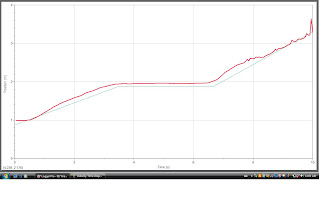 |
| Roller Coaster |
Probably everyone have heard roller coaster and wanted to enjoy a ride. As the train cruising down from a steep hill, did anyone think about the physics behind it? What made the train crusing at a extremely high speed without a motor? What made the train loops 3 or 4 times and not falling off at the middle? They are all about physics and especially the kinetic energy and potential energy. A roller coaster is a very simple machine. The train is first carried up to the top of a lift hill and is from then powered by gravity until it reaches the end of a ride. In a roller coaster, there are two types of energy that decides the success and they are: potential and kinetic evergy. Kinetic energy is the energy of motion. When a object is moving, it has a kinetic energy on it, and when it moves faster, coordinately, a higher kinetic energy. Potential energy is harder to explain but could be simply thought as stored energy. For example, when the train is slowly moving up to the top of a hill, it gains potential energy. This energy is not used until the train start cruising down the hill. When there is more potential energy stored, the faster the train can move. And, when the train is cruising down the hill,the potential energy stored is converted to kinetic energy . The further it cruises down, the more potential energy that gets converted to kinetic energy. In other words, the train picks up speed as it falls. There is a short flash could simulate the increase and decrease of energy in a short and simple roller coaster. Flash to Show Potential and Kinetic Energy











